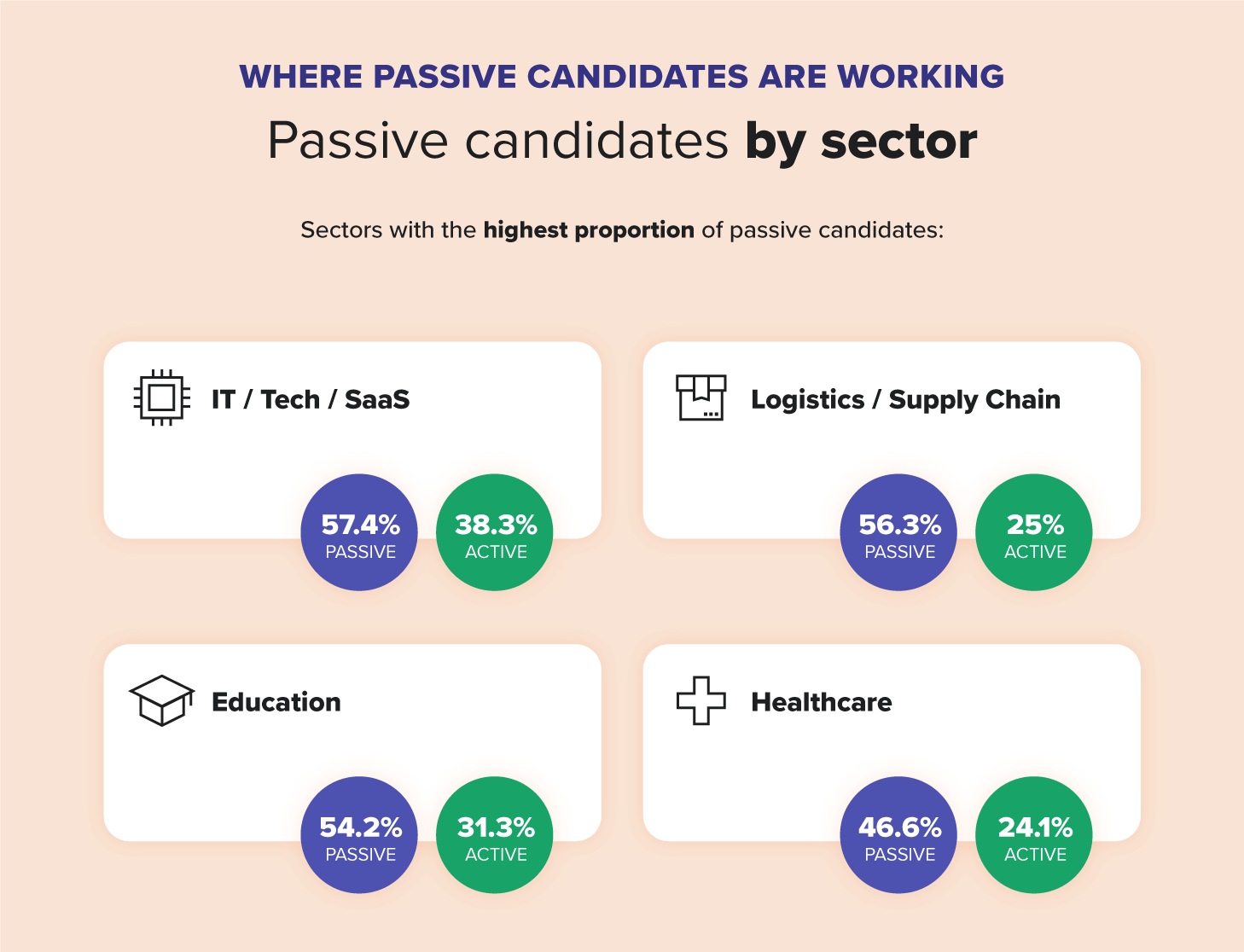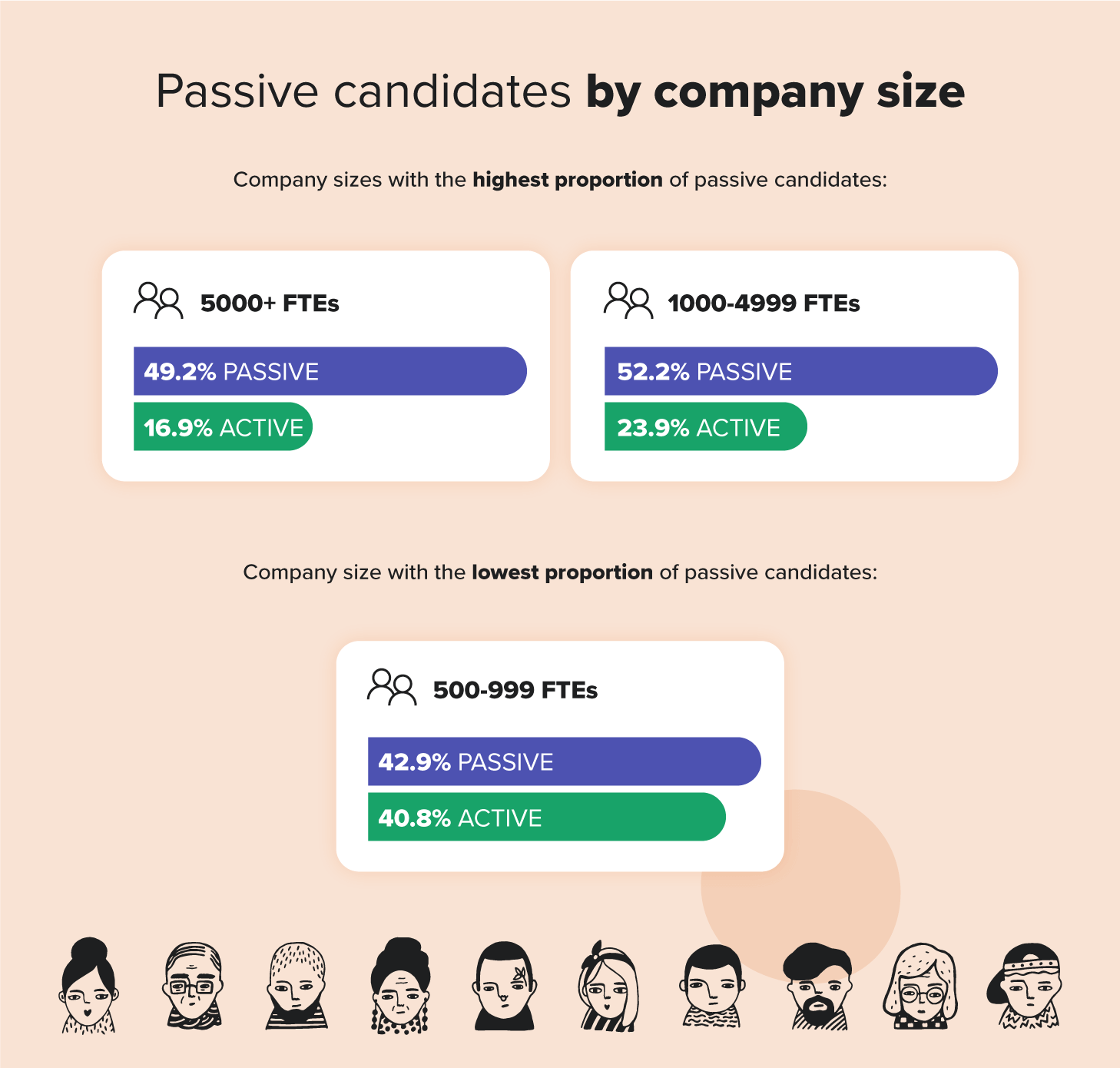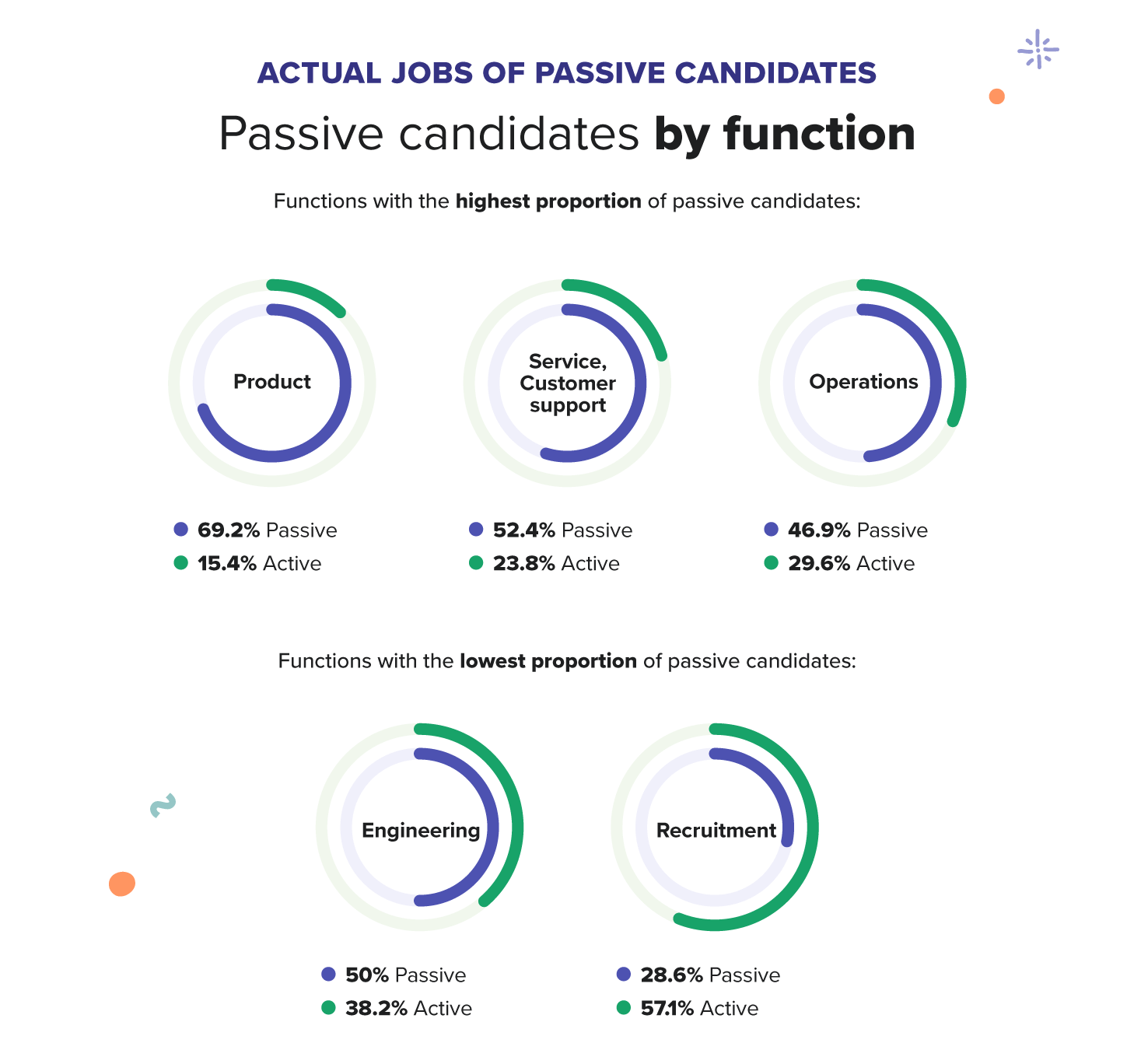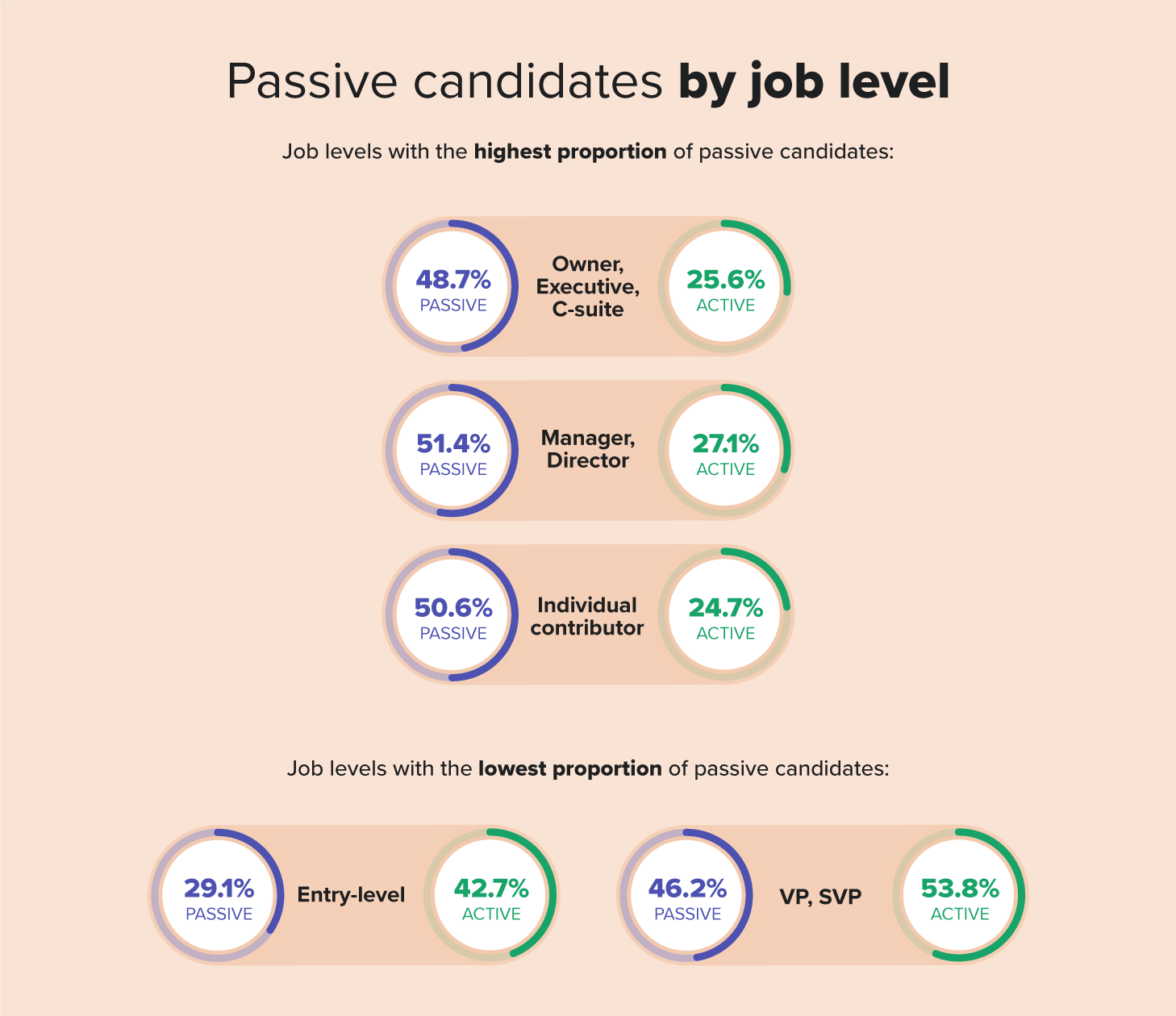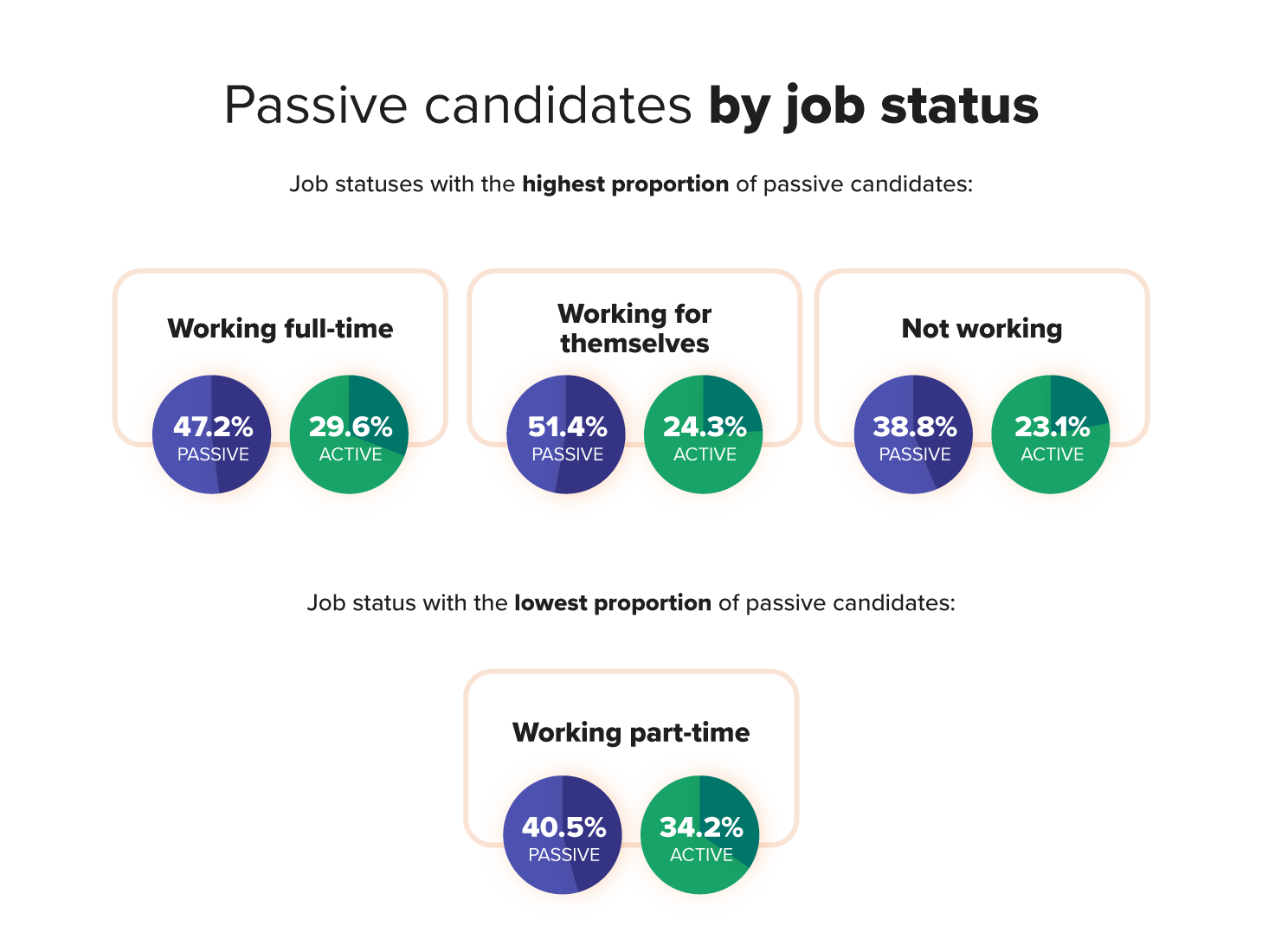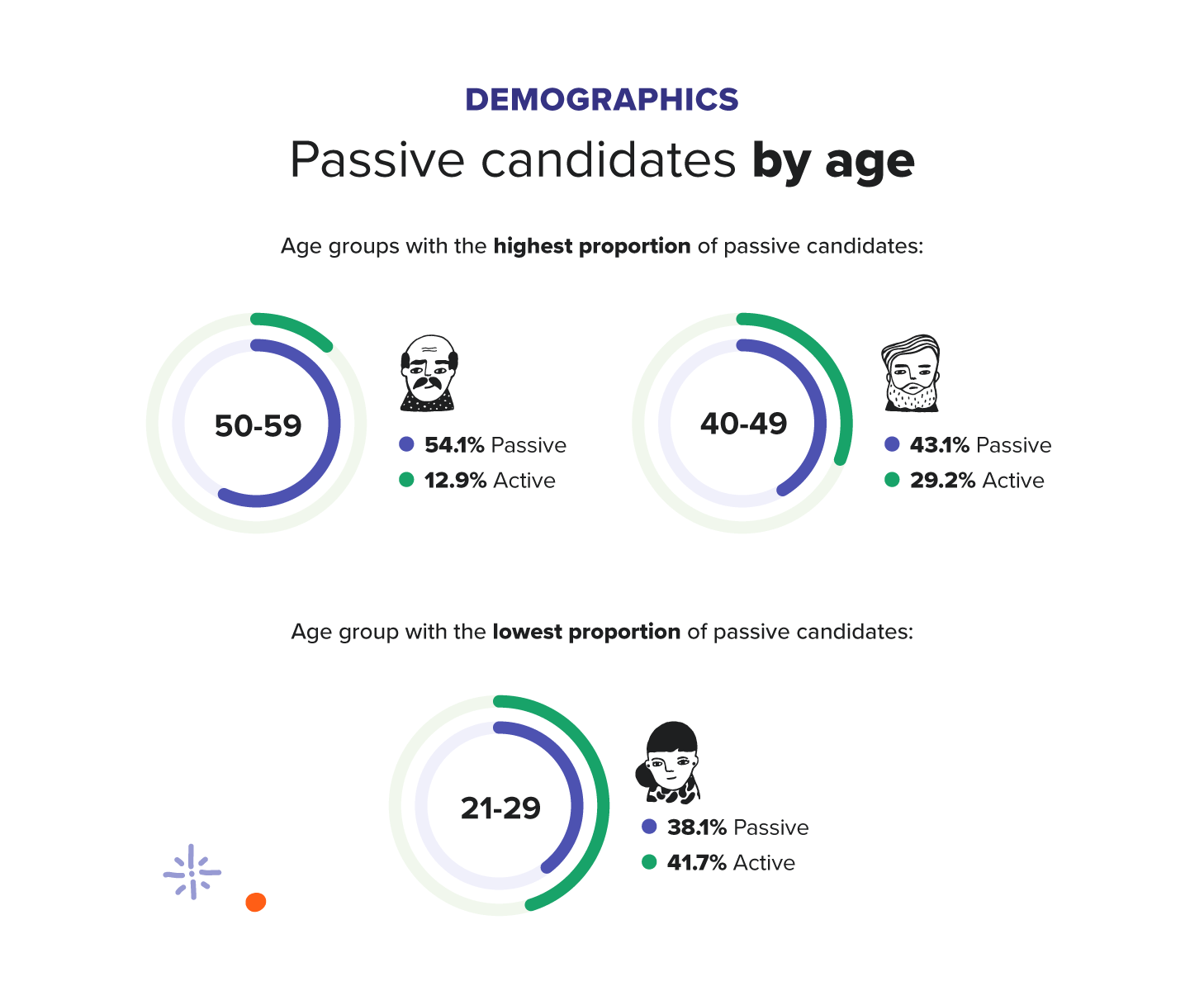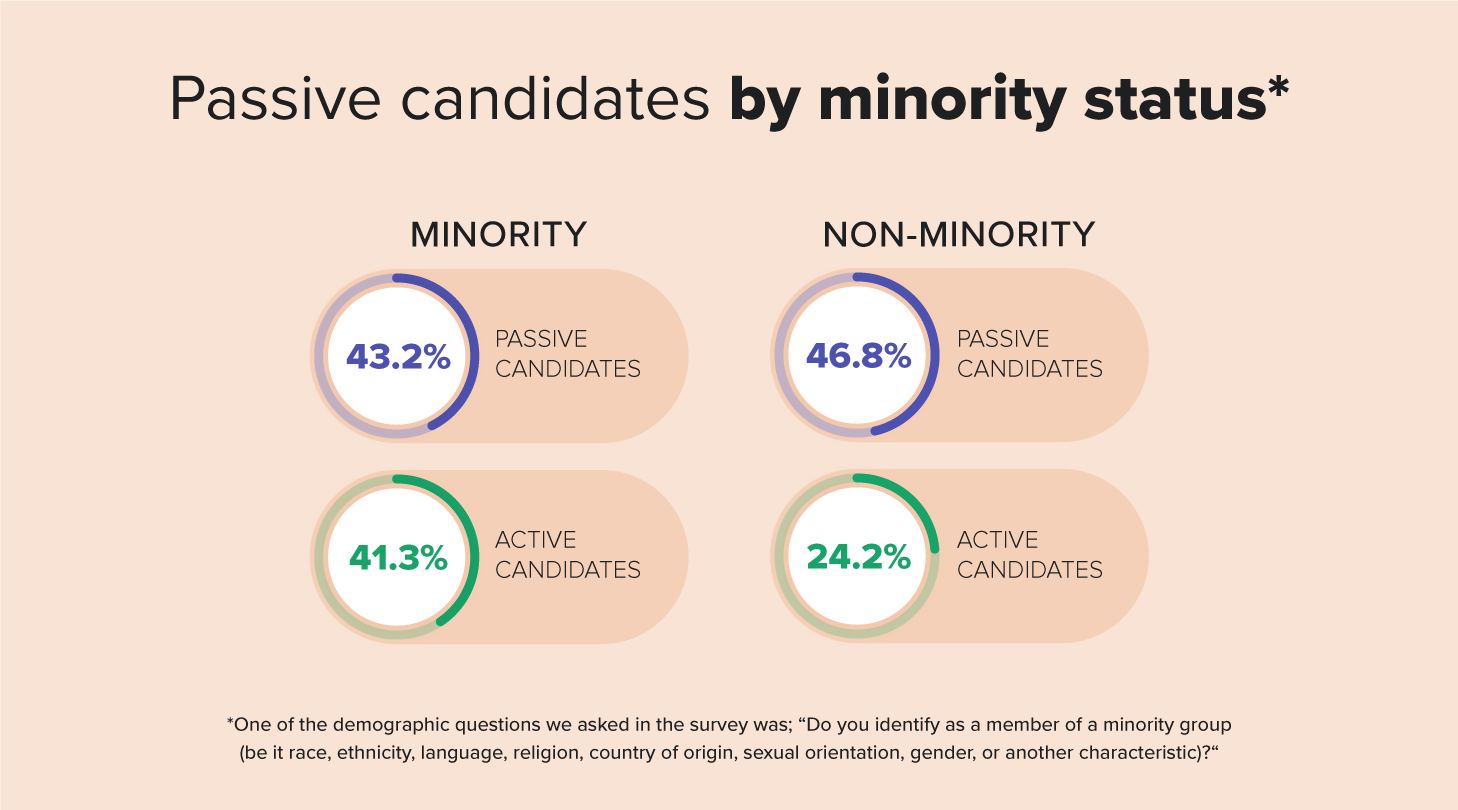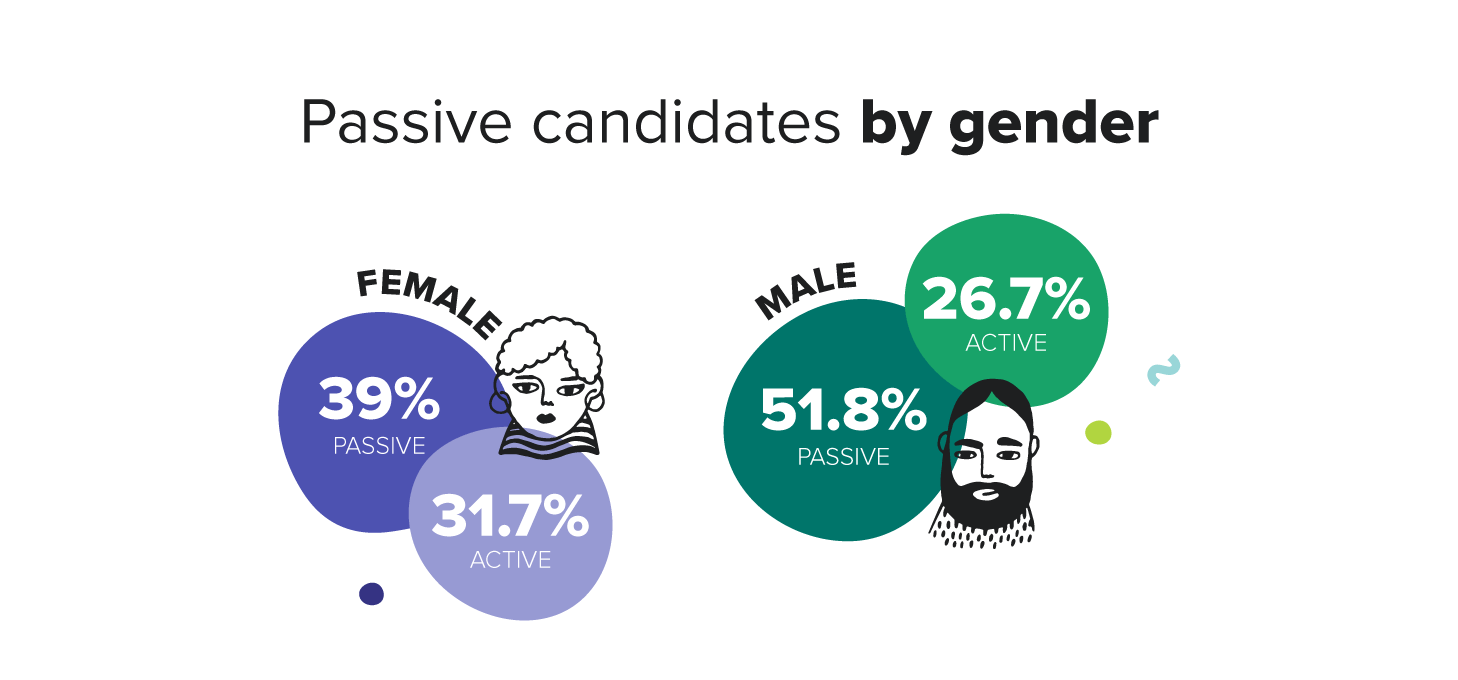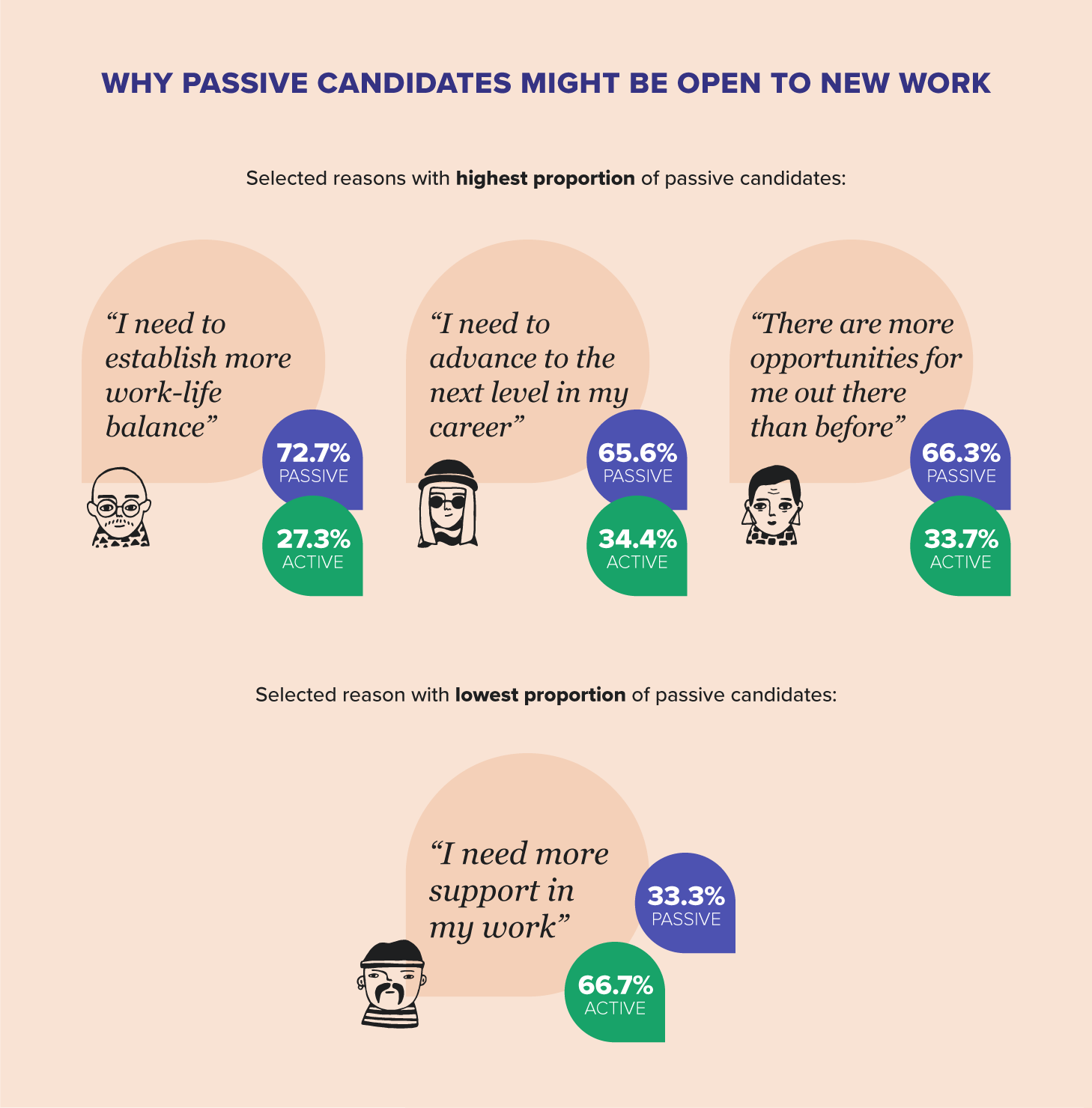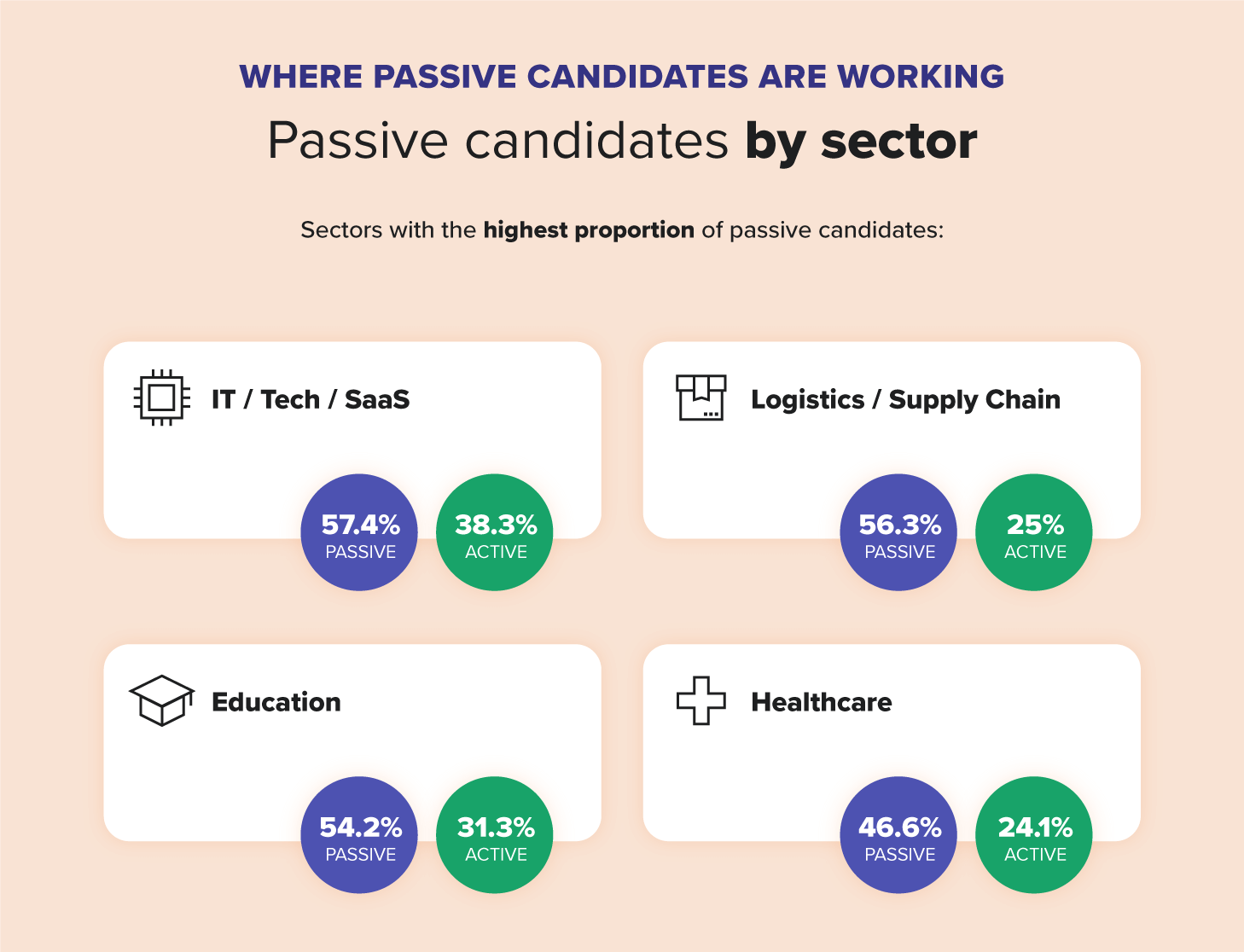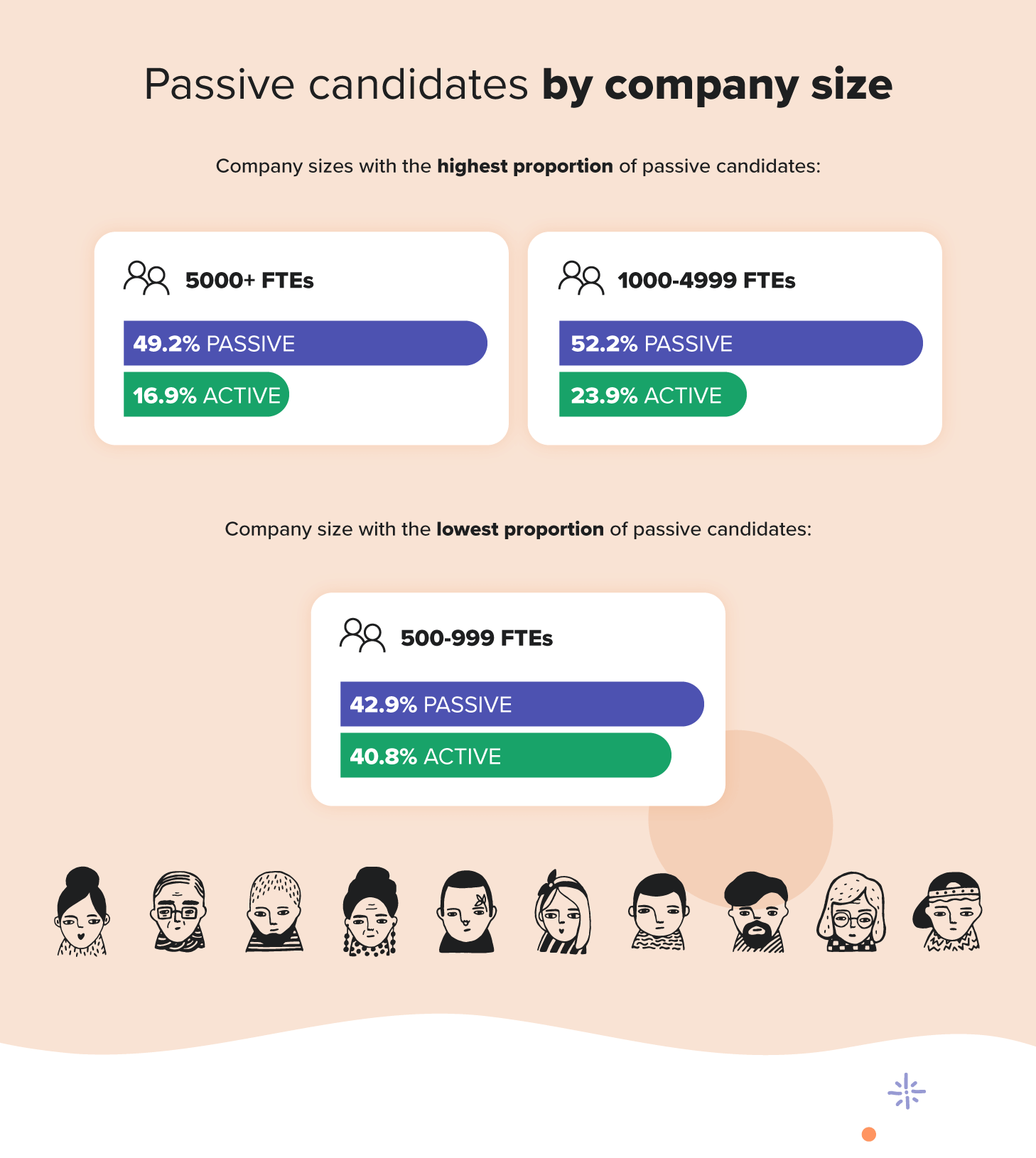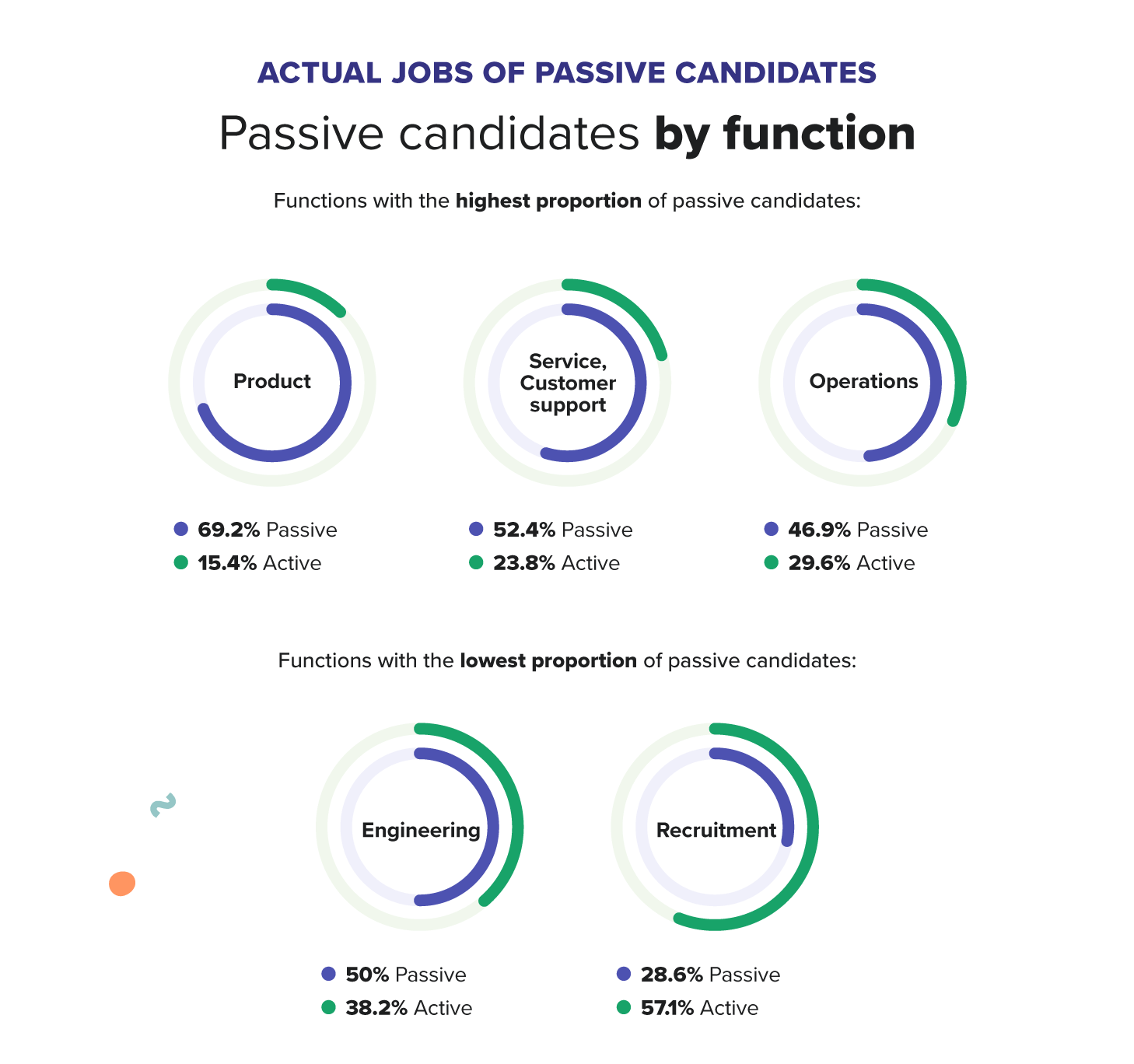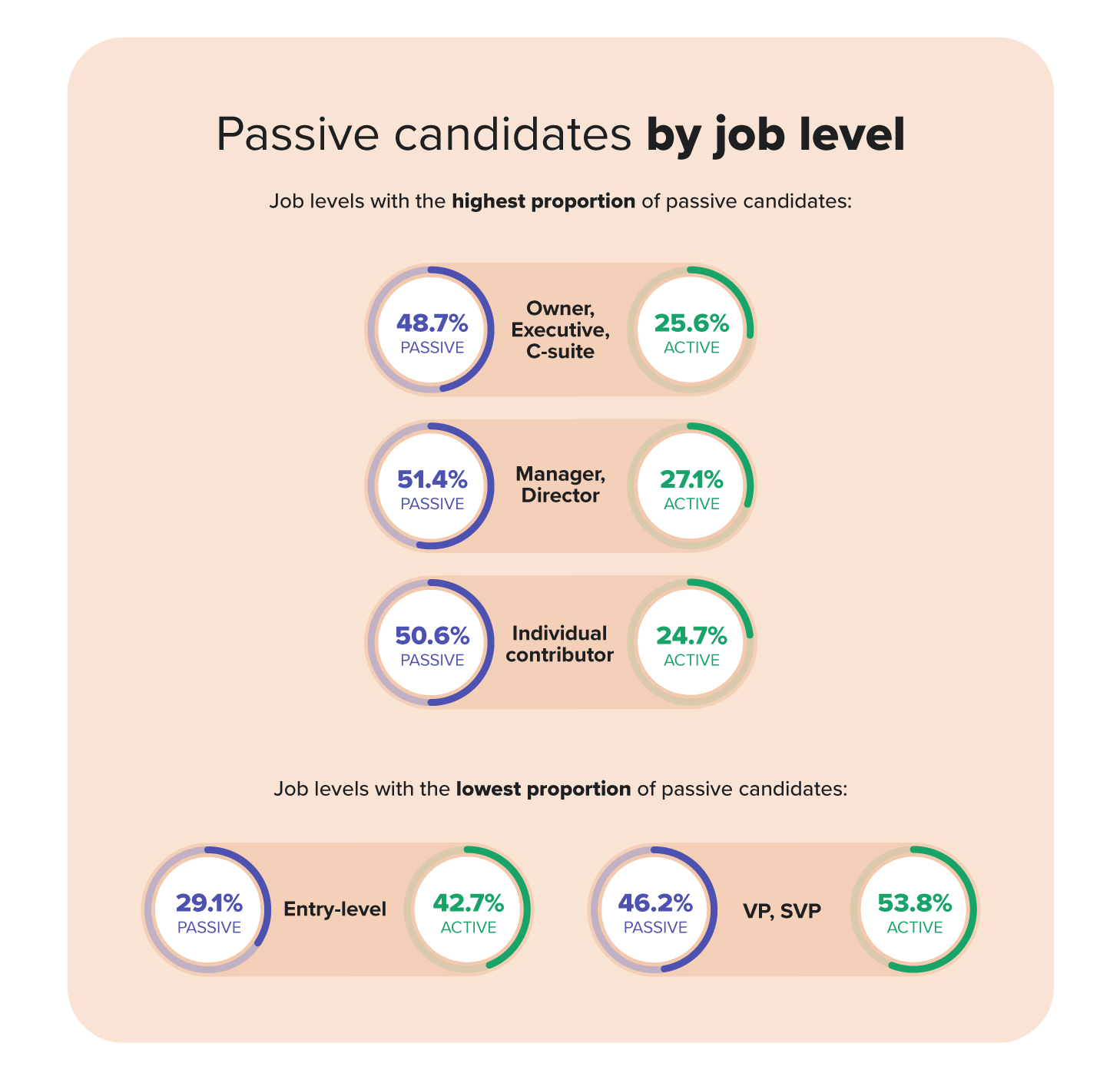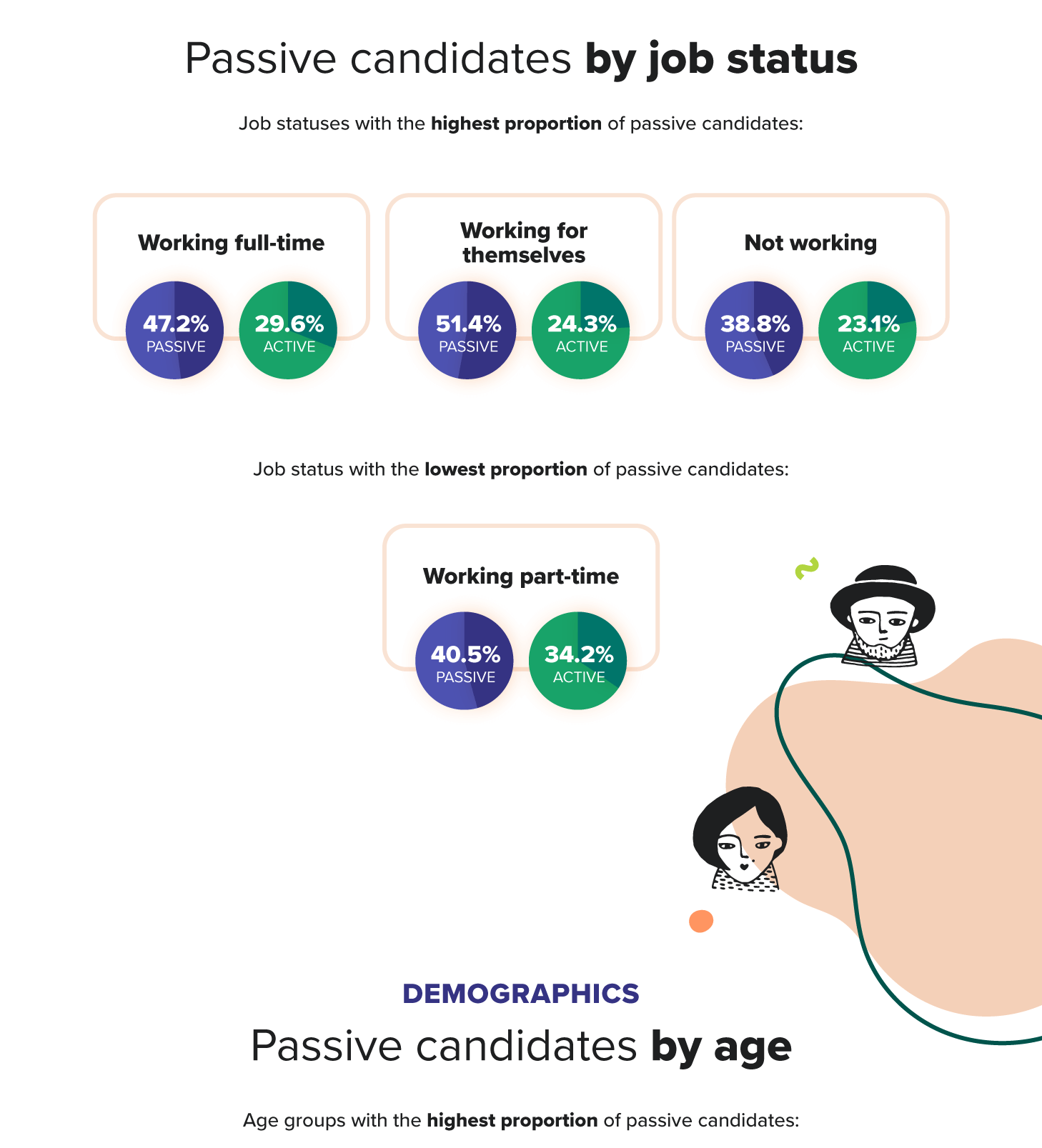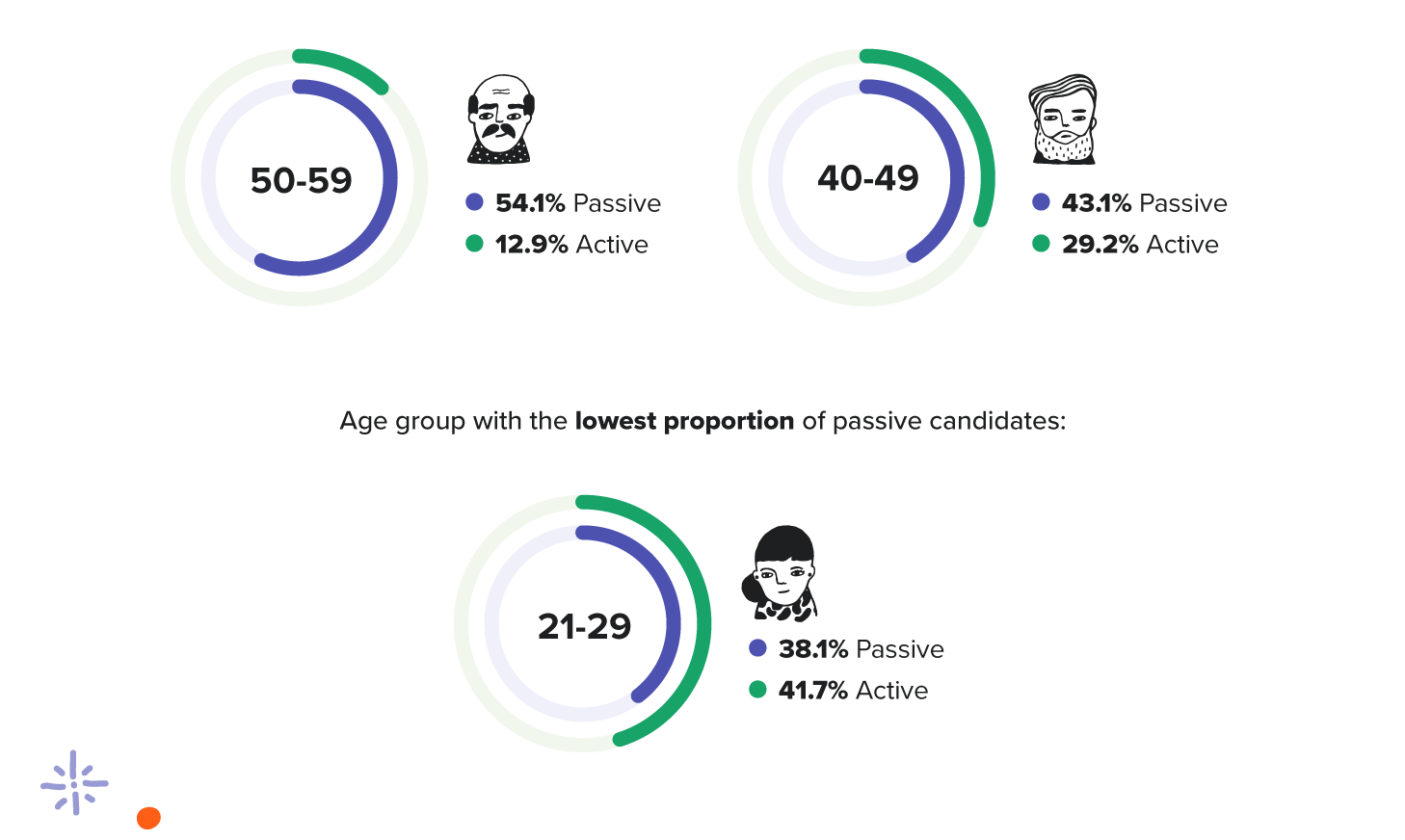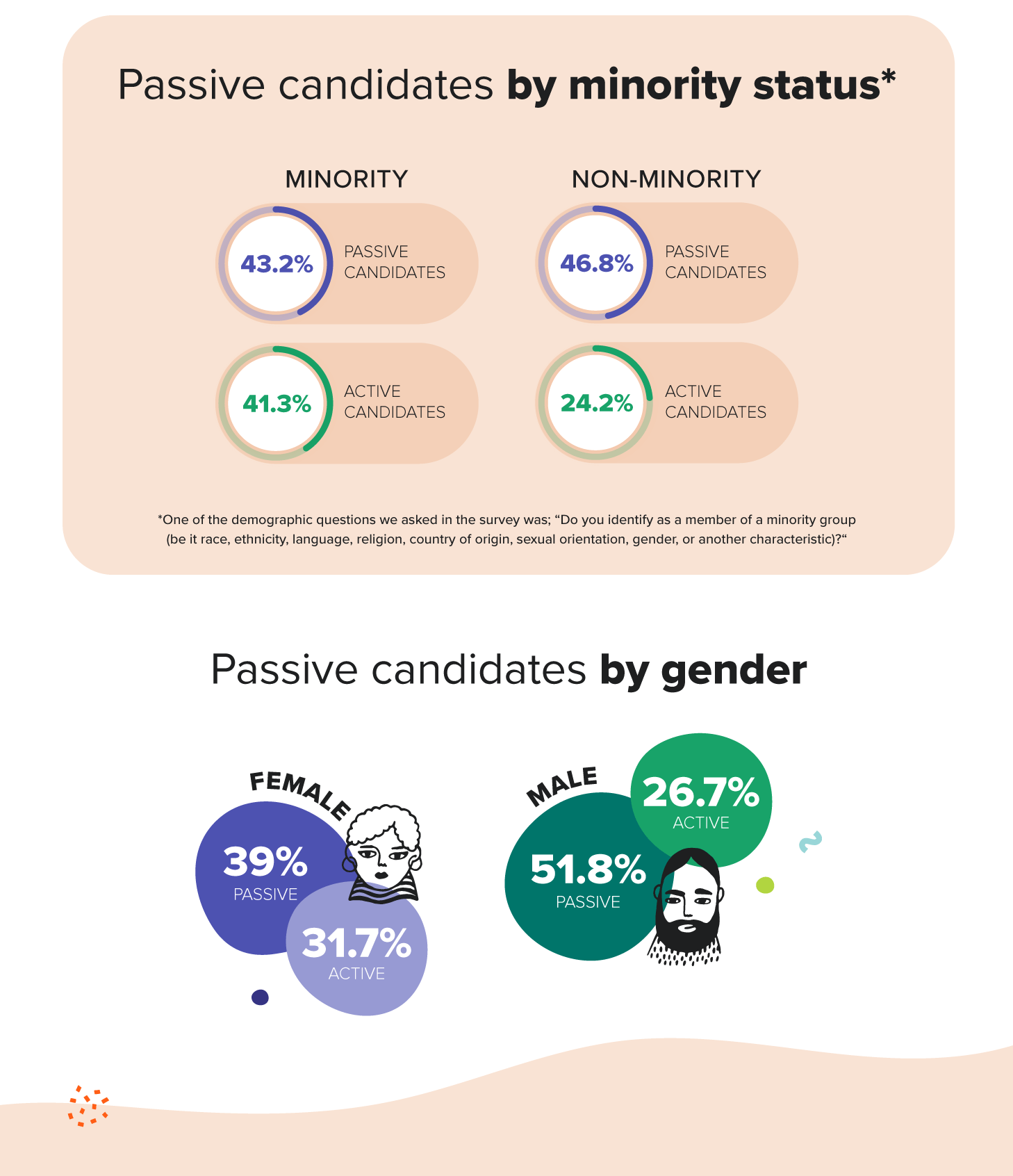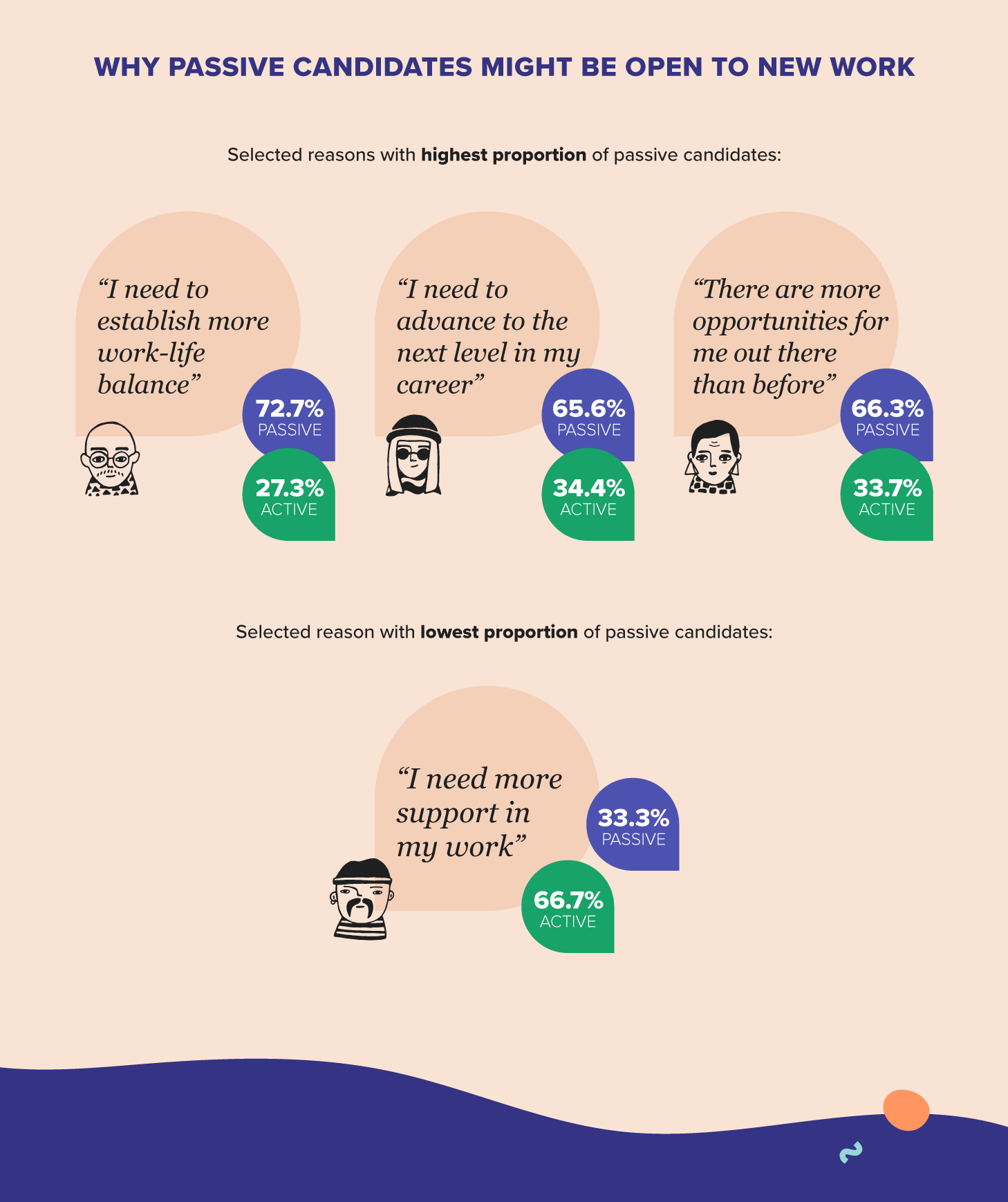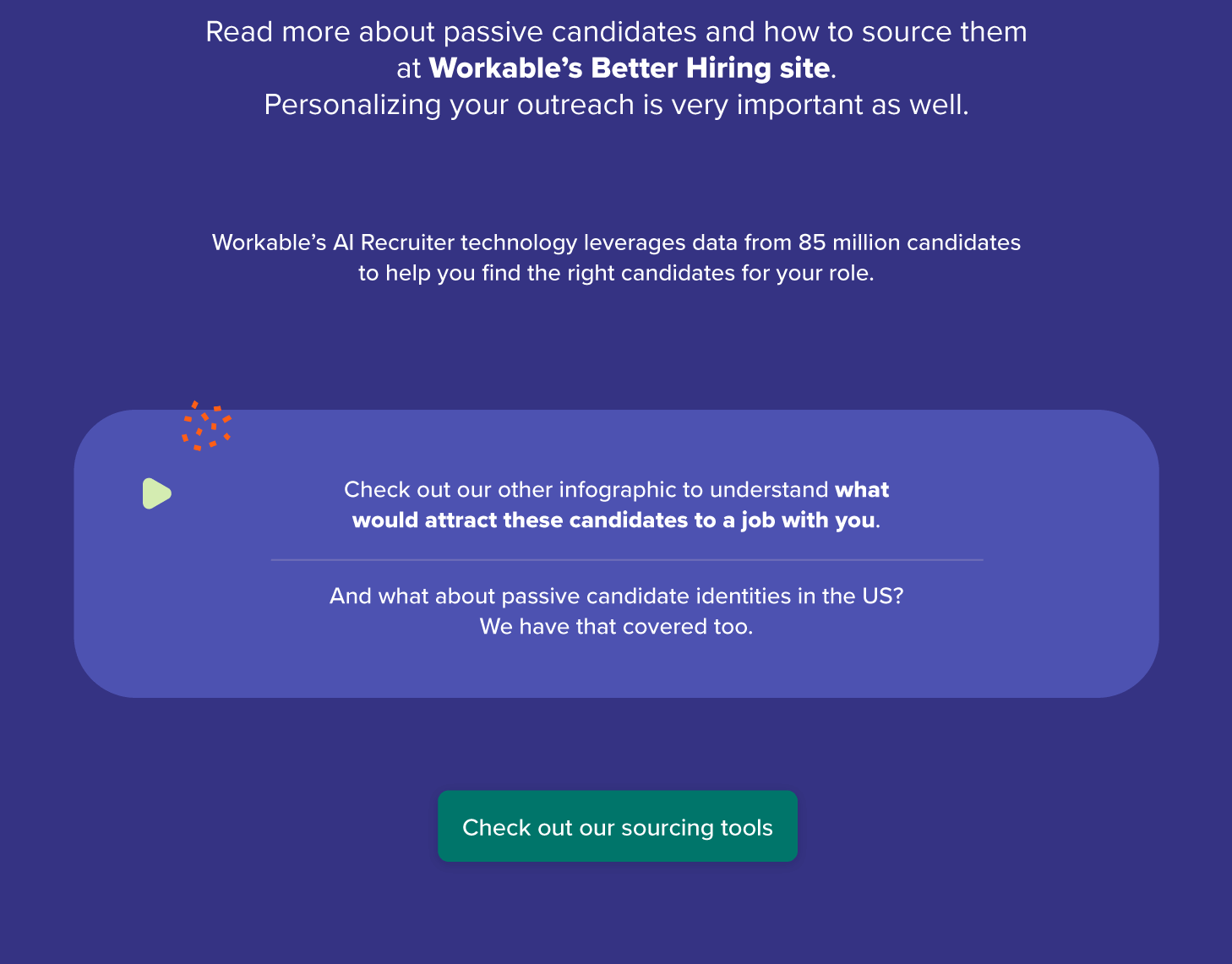INFOGRAPHIC: 45% of UK workers are passive candidates. Who are they?
As a UK employer, you’re probably frustrated that you’re not getting enough applicants for your open roles, let alone filling roles as quickly as you used to. Our monthly Hiring Pulse report shows a consistent growth in job openings combined with a worrisome drop in candidates per hire.

But there’s one potential solution. Have you considered reaching out to passive candidates? They may not be actively looking, but they’re open to a conversation. More so, they may not even know they want to work for you until you talk with them first.
Want to see all the data in one place? Check out the full infographic below or download it for your own files.
And there’s a lot of them out there. Our recent Great Discontent survey of UK workers found that 45.1% are passively open to new opportunities.
But, before reaching out to passive candidates, let’s first understand who they are so you know who you’re dealing with.
So who are these passive candidates?
Passive candidates by sector
Let’s start with where they’re working. If you’re hiring in tech, logistics / supply chain, education, or healthcare, passive candidates are your opportunity to get ahead.
Interestingly, no sectors showed more active than passive jobseekers in the UK.
Passive candidates by company size
The larger the company, the more likely they’ll have far more passive than active candidates. Although all company sizes showed more passive than active candidates, those in the 500-999 FTE range showed the most even balance between both.
Now, let’s look at their actual jobs:
Passive candidates by function
Those working in product, service / customer support, and operations are more set in their roles but they’re open to talking about a new job.
Those working in recruitment are the polar opposite – they’re very much actively looking!
Passive candidates by job level
If you’re hiring for senior positions – especially VP level – the majority of those are actively looking, as well as those at the entry level. Managers, directors, individual contributors, and executives are much more passive.
That last group also includes owners – perhaps they’re happy to take on a job rather than deal with all the hassle of running a company, but not actively looking (yet)?
Passive candidates by job status
Full-time workers and those working for themselves are the most passive of all job statuses – likely because they’re in a good situation at the moment.
But to the previous point about owners, perhaps those working for themselves are likewise open to taking on a full-time paid position so they don’t have to run their own operation.
And finally, their demographics:
Passive candidates by age
The most passive age group in the UK job market is in the 50-59 year range – in other words, those likely to be already established in career and life and nearing retirement, but perhaps still open to one more job jump.
Meanwhile, the youngest adult cohort is more actively hunting for new work opportunities.
Passive candidates by minority status
One of the demographic questions we asked in the survey was; “Do you identify as a member of a minority group (be it race, ethnicity, language, religion, country of origin, sexual orientation, gender, or another characteristic)?”.
We found that those identifying as a non-minority are more likely to be simply curious about other jobs but not outright applying. And those identifying as a minority are more actively looking and far less settled in their existing roles – perhaps because they’ve decided their current situation is no longer acceptable or tenable.
Passive candidates by gender
Those identifying as male are far more likely to be passive than active candidates than their female counterparts. Females are either more actively looking or not looking at all.
And importantly, the reason why they might be open to new work:
Workers who are looking for a better balance between their work and home lives are far more likely to be passive candidates. The same rings true for those interested in career progression and those who see more work opportunities out there than in hte past.
The opposite is true for those who need more support in their work – those candidates are much more likely to be actively looking.
We hope you found these insights helpful. You can also read more about passive candidates and how to source them. Personalizing your outreach is very important as well.
Check out our other infographic to understand what would attract these candidates to a job with you. And what about passive candidate identities in the US? We have that covered too.
In the meantime, you can save time and resources when utilizing powerful AI-driven tools to source the best candidates for your company.

